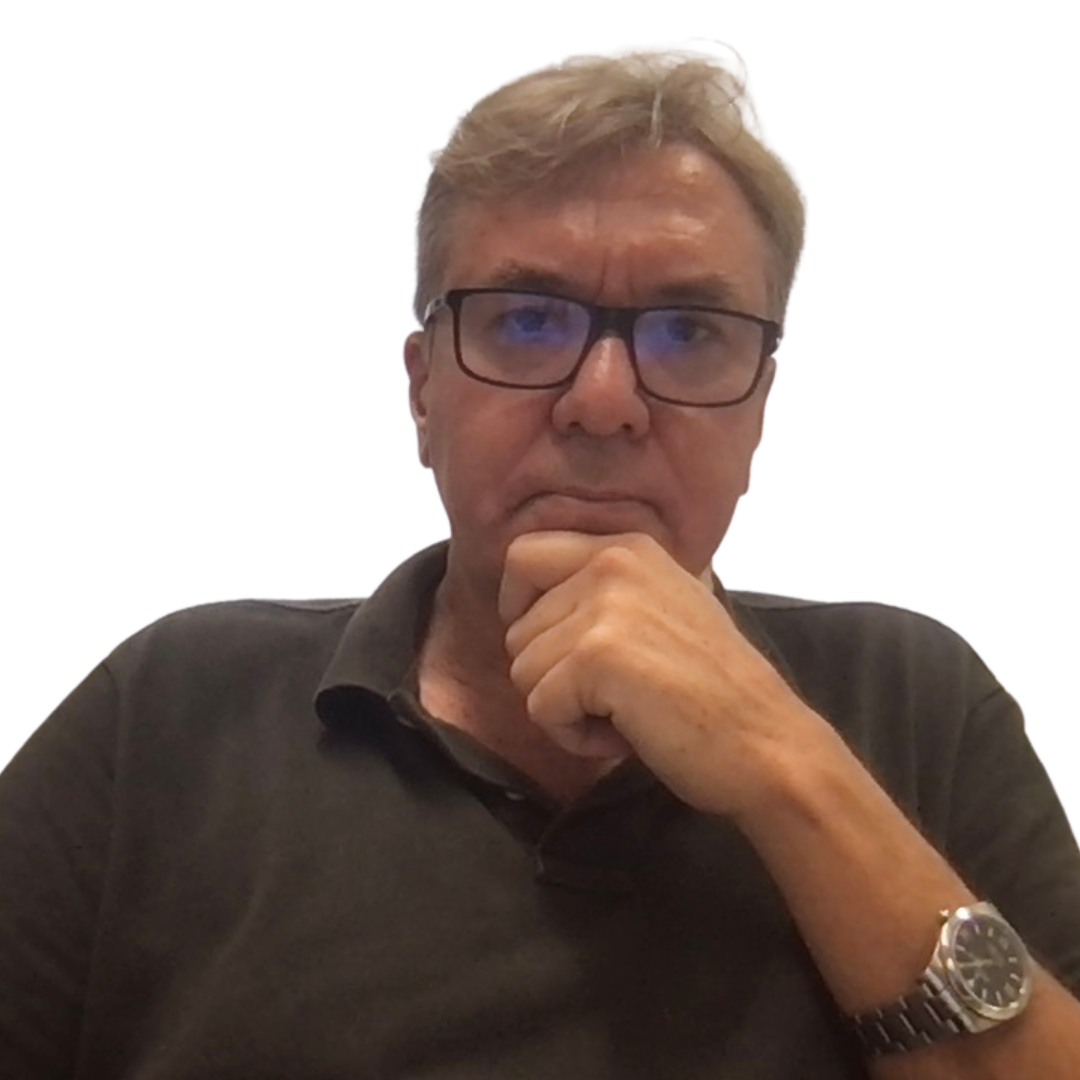
Marco FOIANI
Focus of our research is on cellular pathways which maintain genomic integrity in response to intrinsic topological stress, due to conflicts between replication and transcription, or extrinsic mechanical stress exerted by cytoskeletal or extracellular matrix forces. Our work has contributed to elucidate the ATR and ATM-dependent checkpoint processes controlling the interfaces between DNA replication, recombination, transcription and DNA topology and preventing abnormal chromosome transitions. In recent years, focus of our research has geared more towards the connections between cell metabolism and genome integrity pathways and between chromosome dynamics and mechano-transduction circuits controlling cell and nuclear plasticity.
m.foiani[at]nus.edu.sg
Senior Principal Investigator, Cancer Science Institute of Singapore, NUS
| 2004 | Elected member of the Academia Europeae |
| 2004 | Chara D'Onofrio award |
| 2001 | Elected EMBO Member |
| 2001 | Biotech Award (AMGEN) |
Current research projects in the lab fall under the following categories:
Genome integrity and topological studies of chromatin during DNA replication/transcription
Replication and transcription are essential processes for the faithful transmission of genetic information in organisms. Both replication and transcription unwind the DNA helix, generating torsional stress. Hence, it is imperative that these processes must be highly coordinated to prevent any potential clash that can be detrimental to genomic integrity. The complex structure of the chromosomes and the fact that DNA fiber is often anchored to fixed structures such as the nuclear envelope or the chromosome scaffold, impose topological barriers and impede the free rotation of the DNA. The coordinated action of type I and type II topoisomerases are essential to relieve the topological stress arise during replication-transcription clashes and our projects aim to unravel these complex processes. We have shown in the past that the integrity of genes transcribed in S phase requires the coordinated action of DNA topoisomerase II (Bermejo et al., 2009) and Senataxin (Alzu et al., 2012). Failures in coordinating replication with transcription lead to chromosome fragility and accumulation of RNA-DNA hybrids that are also recombinogenic (Alzu et al., 2012; Bermejo et al., 2009; Bermejo et al., 2012b). We also studied the factors that facilitate replication termination. We identified genomic locations where replication termination occurs (TER zones) and found that fork collision is mediated by the coordinated action of DNA topoisomerase II and the DNA helicase Rrm3 (Fachinetti et al., 2010).
Recently, our group mapped the genome wide topological architecture of transcribed genes in G1 and S phase in yeast. We showed the existence of specific topological architecture at the coding regions wherein negative supercoiling at the gene boundaries are locked into a cruciform confirmation by Hmo1 preventing supercoil diffusion at the coding regions (Achar et. al., 2020). We propose that together with Top2, Hmo1 modulates the gene architecture and topological memory.
Building on these observations, current projects in our lab aims to address questions regarding RNA-DNA hybrid formation, completion of replicon fusion during replication termination, and establishment of intra and inter-chromosomal connections.
Mechanotransduction pathways mediated by DNA damage response pathway proteins
DNA Damage Response (DDR) proteins ATR/Mec1, ATM/Tel1 and Chk1,Chk2/Rad53 act as a barrier to oncogenesis and are often mutated in cancer cells. Earlier studies in our group identified an essential role for ATR in coordinating DNA replication and transcription. As mentioned before, certain chromatin regions associate with the nuclear envelope, thus generating physical impediments for chromosome replication and condensation. We found that ATR plays a pivotal role in controlling the chromatin association with the nuclear envelope (NE) in S phase and in prophase. During replication, ATR detaches transcribed chromatin from the NE by phosphorylation of key nucleoporins and prevents the accumulation of topological constraints at regions where forks encounter transcribed genes gated to the NE. Failures to detach transcribed genes from the NE, cause replication fork collapse and fork reversal (Bermejo et al., 2011). More recently we found that ATR is part of a mechano-transduction pathway that is mediated by the NE in response to the topological stress in S phase or in prophase and that ATR is essential for cell mechanics and nuclear integrity during interstitial migration (Kumar et al., 2014, Kidiyoor et. al., 2020). Currently in the lab we are dissecting the role of another DDR protein ATM/Tel1 in cellular mechanotransduction and our results suggests that that ATM, ATR and possibly mTOR (another member of the PI3K family), are part of an integrated mechanical response to membrane stress; plays a role in coupling plasma membrane signaling with nuclear events and modulates cell and nuclear plasticity. Current projects in the lab aim to understand the exact mechanism by which ATR/ATM respond to the mechanical stress. We are also interested in exploiting the role of ATR in the maintenance of NE integrity for therapeutic purposes.
Metabolism, DDR and ageing
Metabolism, a fundamental biological process essential for cellular survival also creates metabolic byproducts that lead to the generation of DNA damage including but not limited to Reactive Oxygen Species (ROS). Research during the past decade has shown that cellular metabolism is tightly linked to DDR machinery. Cancer cells present extensive metabolic rewiring together with altered DDR pathways demonstrating the importance of scientific endeavors in this area.
In our lab, we attempt to understand the metabolic pathways with specific emphasis on ATR/ATM DDR proteins. Our initial finding that certain autophagy pathways modulate the acetylation of factors which mediate ATR activation, contributed to connect the non-nuclear regulatory circuits to the ATR-dependent DNA damage response (Robert et.al., 2011). More recently we showed that nutrient sensing and metabolic pathways are integrated with ATR mediated DDR response through the protein phosphatase PP2A (Ferrari et. al., 2017). While PP2A phosphatases attenuates the DDR, nutrient-sensing TORC1-Tap42 axis maintains DDR activation by inhibiting PP2A. Currently, projects in the lab attempts to address metabolic cues that leads to chromosome packing and genome integrity, metabolic rewiring during ageing and its connection to oncogenesis and the interplay between metabolism and nuclear mechanotransduction.
- G.Bastianello, G. Porcella, G. V. Beznoussenko, G. Kidiyoor, F. Ascione, Q. Li, A. Cattaneo, V. Matafora, A. Disanza, M. Quarto, A. A. Mironov, A. Oldani, S.Barozzi, A. Bachi, V. Costanzo, G. Scita and M.Foiani. Cell stretching activates an ATM mechano-transduction pathway remodeling cytoskeleton and chromatin. 2023 Cell Rep. in press.
- Choudhary R., Niska-Blakie J., Mohamood Adhil, Liberi G., Achar Y.J., Giannattasio M. and Foiani M.¬ Sen1 and Rrm3 ensure permissive topological conditions for replication termination. Cell Rep. 2023 4(7)112747.
- Kosar M, Giannattasio M, Piccini D, Gaillard H, Martini E, Restuccia U, Ramirez-Otero MA, Garre M, Verga E, Andújar-Sánchez M, Maynard S, Hodny Z, Costanzo V, Kumar A, Bachi A, Aguilera A, Bartek J, Foiani M. The human nucleoporin Tpr protects cells from RNA-mediated replication stress. Nat Commun. 2021 Jun 24;12(1):3937.
- Ajazi A, Bruhn C, Shubassi G, Lucca C, Ferrari E, Cattaneo A, Bachi A, Manfrini N, Biffo S, Martini E, Minucci S, Vernieri C, Foiani M. Endosomal trafficking and DNA damage checkpoint kinases dictate survival to replication stress by regulating amino acid uptake and protein synthesis. Dev Cell. 2021 Sep 27;56(18):2607-2622.e6.
- Achar YJ, Adhil M, Choudhary R, Gilbert N, Foiani M., Negative supercoil at gene boundaries modulates gene topology., Nature 2020 Jan;577(7792):701-705.
- Kidiyoor GR, Li Q, Bastianello G, Bruhn C, Giovannetti I, Mohamood A, Beznoussenko GV, Mironov A, Raab M, Piel M, Restuccia U, Matafora V, Bachi A, Barozzi S, Parazzoli D, Frittoli E, Palamidessi A, Panciera T, Piccolo S, Scita G, Maiuri P, Havas KM, Zhou ZW, Kumar A, Bartek J, Wang ZQ, Foiani M. ATR is essential for preservation of cell mechanics and nuclear integrity during interstitial migration, Nat Commun. 2020 Sep 24;11(1):4828.
- Bruhn C, Ajazi A, Ferrari E, Lanz MC, Batrin R, Choudhary R, Walvekar A, Laxman S, Longhese MP, Fabre E, Smolka MB, Foiani M. The Rad53 CHK1/CHK2-Spt21 NPAT and Tel1 ATM axes couple glucose tolerance to histone dosage and subtelomeric silencing, Nat Commun. 2020 Aug 19;11(1):4154.
- Rossi SE, Foiani M, Giannattasio M. Dna2 processes behind the fork long ssDNA flaps generated by Pif1 and replication-dependent strand displacement. Nat Commun. 2018 Nov 16;9(1):4830.
- Ferrari E, Bruhn C, Peretti M, Cassani C, Carotenuto WV, Elgendy M, Shubassi G, Lucca C, Bermejo R, Varasi M, Minucci S, Longhese MP, Foiani M. (2017). PP2A Controls Genome Integrity by Integrating Nutrient-Sensing and Metabolic Pathways with the DNA Damage Response. Mol Cell. 2017 Jul 20;67(2):266-281.e4.
- Kumar A, Mazzanti M, Mistrik M, Kosar M, Beznoussenko G, Mironov A, Garrè M, Parazzoli D, Shivashankar GV, Scita G, Bartek J and Foiani M. (2014) ATR mediates a checkpoint at the nuclear envelope in response to mechanical stress. Cell; 158(3): 633-46




